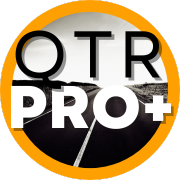A-6 Security Plan
Statement of Purpose
Reliable Tank Line is committed to the safety and security of our employees, the customers we serve, and the public. We all are aware of the reasons that we must be more vigilant to prevent or inhibit the use of our equipment, terminals, or the products we transport by terrorists. We urge all employees to help us implement this plan and to continuously improve our security efforts.
Regulations of the United States Department of Transportation (USDOT) require that any employee of this company (including independent contractors) who is a "hazmat employee" be trained and familiar with our company's security plan. According to those regulations, a "hazmat employee" is a person who is employed by a hazmat employer and directly affects hazmat transportation safety, including an owner-operator of a motor vehicle, which transports hazardous materials; a person (including a self-employed person) who:
- loads, unloads, or handles hazmat;
- tests, reconditions, repairs, modifies, marks, or otherwise represents packaging as qualified for use in the transportation of hazmat;
- prepares hazmat for transportation; is responsible for safety of transporting hazmat; or
- operates a vehicle used to transport hazmat
As such, Reliable Tank Line implements the following provisions regarding the employment (including applications for employment) of drivers. Additionally, the company may (at its discretion) implement some or all these provisions relevant to the employment of non-driver employees who perform functions regulated by the U.S. Department of Transportation's "Hazardous Materials Regulations" within Title 49 of the Code of Federal Regulations.
Personnel Security
- Perform detailed background checks on all applicants for any driver or leased operator position.
- To the extent possible, check for criminal convictions.
- Contact previous employers and references.
- Investigate gaps in employment.
- Maintain employee information in a confidential and secure manner, and in compliance with all relevant federal and state regulations and statutes regarding confidentiality and individual privacy.
- Verify that drivers are US citizens or that non-citizens have documentation appropriate to their immigration status.
- Ensure drivers have current CDL with appropriate endorsements and another form of identification (i.e., company issued credential; current medical certificate.)
- Collect company identification card and any security materials when a driver/employee leaves the company. Update websites and lists. Cancel passwords to prohibit computer access by former employees.
Unauthorized Access
- Management will designate who oversees security for the company and at each facility.
- Management will conduct security awareness training for all employees, including how to report suspicious incidents or events.
- Designated personnel will perform yard checks and equipment reconciliations.
- Designated personnel will remove keys from trucks that are not in use and have secure key storage.
- All employees should control access to computers, especially those with product or routing information.
- The Company may request periodic checks of facility areas by local law enforcement, especially when facility is not open, and consider professional security force at higher risk terminals or during Orange or Red conditions.
- The Company may develop specific actions for each security level alert that might be set by the Department of Homeland Security. (e.g., no preloading during condition Red).
- The Company will post the nation's threat level in drivers' room and other public areas.
- The Company will post and periodically review driver anti-terrorism tips.
- Management should inspect facility grounds, maintenance areas, and buildings to identify points of possible unauthorized entry to the property. This will be an important consideration, particularly regarding facilities having more than one point for ingress and egress.
- Periodically, the Company may test emergency response communications equipment and procedures.
Security Enroute
- Sales and supervisory employees should not accept business from an unknown party before verifying company legitimacy.
- Drivers and terminal personnel should lock tractor doors at all times and take keys anytime the driver is not with the vehicle. Ensure windows are closed.
- Drivers should perform "walk around" inspection of vehicle after every stop, including deliveries and breaks. Be sure to look under the trailer and in hose tubes where a device could be attached.
- Supervisors should develop "parking instructions" for any locations away from the terminal. Look for lighted and fenced areas, visibility, and security.
- Supervisors should include security considerations in route selection and times for pick-up and delivery. When possible, avoid bridges, tunnels, and dense population areas.
- Dispatchers and supervisors should minimize driver "down-time" while on route. Schedule and dispatch with as few required stops as possible.
- Management will establish procedures to communicate emergency messages to all facilities and to drivers on the road. Options may include satellite communications systems, cell phones, two-way radios, or scheduled call-in times. Management will include communications procedures for drivers to report any unexpected occurrence with equipment, load, or route.
- Drivers (and other knowledgeable employees) should not discuss any details about their load or pick-up points and destinations with unauthorized personnel, such as over the CB radio or at truck stops.
- Drivers should not pick-up hitchhikers or allow any unauthorized personnel in the truck cab.
- Drivers should not stop to help disabled vehicles or motorists. Call local authorities and notify them of anyone needing assistance. Be suspicious of motorists trying to get the driver to pull over for an "alleged" traffic accident. Be especially suspicious of vehicles with three or more people in them.
- Supervisors should develop procedures for detecting "late loads." Investigate any late load more than an hour late for a delivery.
- Drivers should not change delivery destination unless authorized by dispatch.
- Supervisors should develop a procedure for drivers when being asked to pull over by law enforcement or unmarked vehicle.
- Supervisors should consult with shippers to ensure security of consignee delivery areas. Request well-lighted and marked delivery area and that customer personnel be available to answer safety or security questions.
- All employees are to report any suspicious events to the company and local law enforcement.


